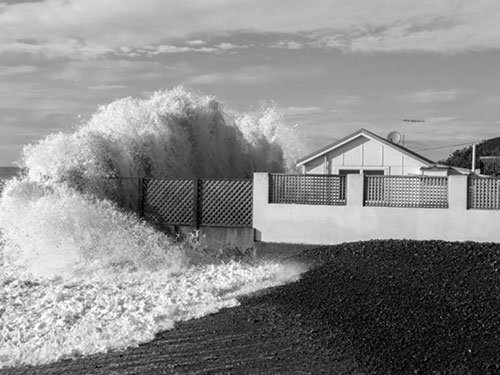Jonathan Chambers has been named Young Engineer of the Year – an Engineering New Zealand award supported by MAS – in recognition of his work with coastal communities impacted by repeat flooding.
Jonathan, a 26-year-old environmental engineer who works at Harrison Grierson in Auckland, says he was honoured to even be considered for this prestigious industry award.
“I was shocked to be a finalist, so I was just blown away to win.”
When asked to present on an impactful project from his career as part of the nomination process, Jonathan chose to share the work he’s been doing as part of his master’s degree at the University of Auckland. He has been working closely with a flood-prone Waikato township to help residents understand the potential impact of the changing climate and how collaborating with the council can deliver equitable solutions for the whole community.
“There are plenty of significant projects in terms of size or scale or cost that I could have presented.
This is small by those metrics, but it’s impactful, it’s happening now and there is so much to learn.
Hopefully, the lessons we learn here can benefit coastal communities grappling with sea-level rise or coastal erosion in the future and possibly through the lens of the proposed Climate Change Adaptation Act.”
 This work involved modelling and analysing a range of flood scenarios based on two climate projections at points throughout the next hundred years in order to understand how the severity of the hazard and its source might change.
This work involved modelling and analysing a range of flood scenarios based on two climate projections at points throughout the next hundred years in order to understand how the severity of the hazard and its source might change.
Coastal communities and councils are having the difficult conversations, identifying which aspects of that lifestyle should be preserved and what might need to be given up in order to achieve that, says Jonathan.
“I’m not a local, so I haven’t experienced the emotions nor the loss that comes with experiencing multiple flooding events firsthand,” says Jonathan.
“There is only so much you can learn by running the numbers through a computer model. What gives you confidence in your findings is getting out there, listening up and learning as much as you can about individual experiences and observations so you can go back and validate that against your work.”
It’s relatively simple to quantify the impacts on an individual or a single property or a piece of infrastructure, says Jonathan.
“But working with a community means understanding the history, the heritage, the values, the diversity of opinion. Then you can have an honest conversation about what the future might hold.”
Know someone who might enjoy this?
Read this next
-
March 2021
Reimagining the Kiwi homeownership dream
-
March 2021
Manaakitanga – more than just hospitality
-
July 2021
Now I can finally smile
-
November 2021
Sustainable Business Network Awards
Professional life
See all-
March 2021
Made for today a century ago
-
March 2021
The great brain gain
-
March 2021
A hectic, horrific working holiday
-
March 2021
Smooth sailing for Southern Spars








